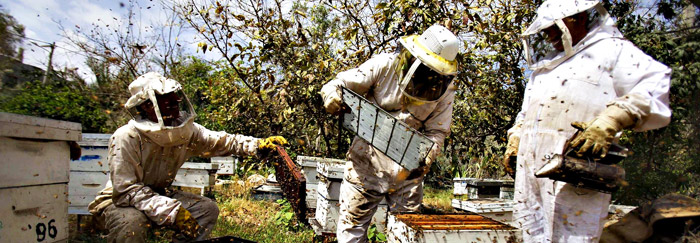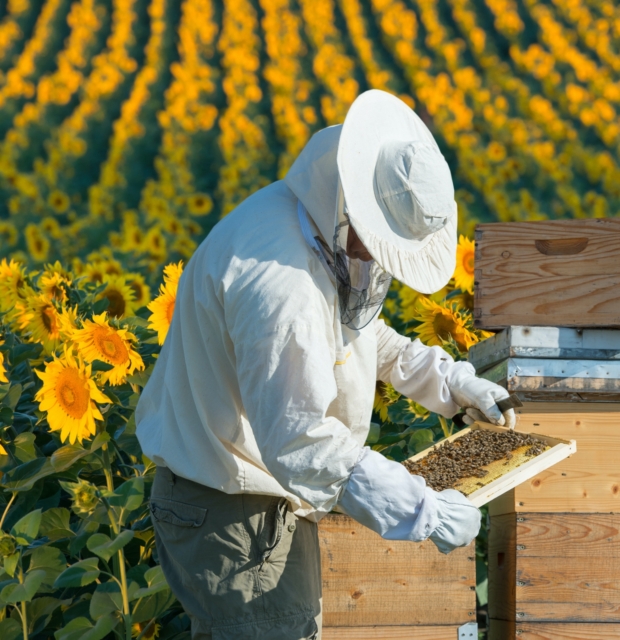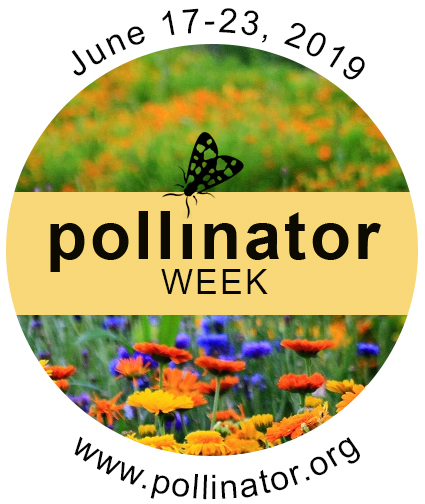News
Coalition Continues to Build Momentum
 Fresh off its one-year anniversary, the Honey Bee Health Coalition continues to make important progress toward fulfilling its core mission of collaboratively implementing solutions to achieve a healthy population of honey bees while also supporting healthy populations of native and managed pollinators in the context of productive agricultural systems and thriving ecosystems. The Coalition, comprised of 38 diverse member organizations and agencies, continues to equip beekeepers and other key stakeholders with the tools and resources they need to help honey bees thrive.
Fresh off its one-year anniversary, the Honey Bee Health Coalition continues to make important progress toward fulfilling its core mission of collaboratively implementing solutions to achieve a healthy population of honey bees while also supporting healthy populations of native and managed pollinators in the context of productive agricultural systems and thriving ecosystems. The Coalition, comprised of 38 diverse member organizations and agencies, continues to equip beekeepers and other key stakeholders with the tools and resources they need to help honey bees thrive.
Varroa Management Guide
In an effort to help beekeepers strengthen hive health by controlling the Varroa mite (Varroa destructor), the Honey Bee Health Coalition released a guide in August to equip beekeepers with tools to monitor and control the destructive parasite.
The Coalition worked with Dr. Dewey Caron, professor emeritus of entomology and wildlife ecology at the University of Delaware and affiliate professor at Oregon State University’s Department of Horticulture, to gather information from leading experts on Varroa mite control. The resulting guide — distributed to beekeepers across North America — identifies straightforward, proactive, and flexible monitoring and treatment methods and guidelines to help beekeepers detect and control Varroa mites.
Coalition Welcomes NAWG, AIA
The Coalition continued its growth during the third quarter of 2015, welcoming the National Association of Wheat Growers and the Apiary Inspectors of America. These organizations represent critical stakeholders in the effort to support honey bee health.
Wright-Bee Flyers
The Honey Bee Health Coalition avidly supports the role public-private partnerships play in improving the health of honey bees and other pollinators. In fact, the White House called these partnerships essential in its National Strategy to Promote the Health of Honey Bees and Other Pollinators.
A great recent example of the power of collaboration and public-private partnerships is the Wright-Bee Flyers — a project supported by the Levin Family Foundation, a member of the Coalition — and its work to bring bees to Wright-Patterson Air Force Base near Dayton, Ohio. Following the roll-out of the White House strategy, this Ohio coalition of beekeepers and other stakeholders installed a series of hives atop an old oil well pad on the base’s property. Learn more about the Wright-Bee Flyers through their YouTube video and the Wright-Patterson Air Force Base’s website.
Bee Healthy App
The Honey Bee Health Coalition is on the cutting edge of developing new ways to strengthen honey bee health. Equipping beekeepers and other key stakeholders with the best, most up-to-date information is vital. That’s why the Coalition is spreading the word about the Alberta Agriculture and Forestry’s new “Bee Health” app.
The app, aimed at putting the best, most current scientific information in beekeepers’ hands, is an easy-to-use guide for apiculturists. It includes information to help beekeepers and other users detect, diagnose, manage, and treat honey bee diseases and parasites. The app also allows Alberta Agriculture and Forestry to stay in touch with beekeepers, sending them warnings about emerging threats to honey bee health and to help beekeepers troubleshoot problems.
To learn more about the free mobile app, search the Apple App Store or Google Play store for “bee health.” You also can download the app here.

